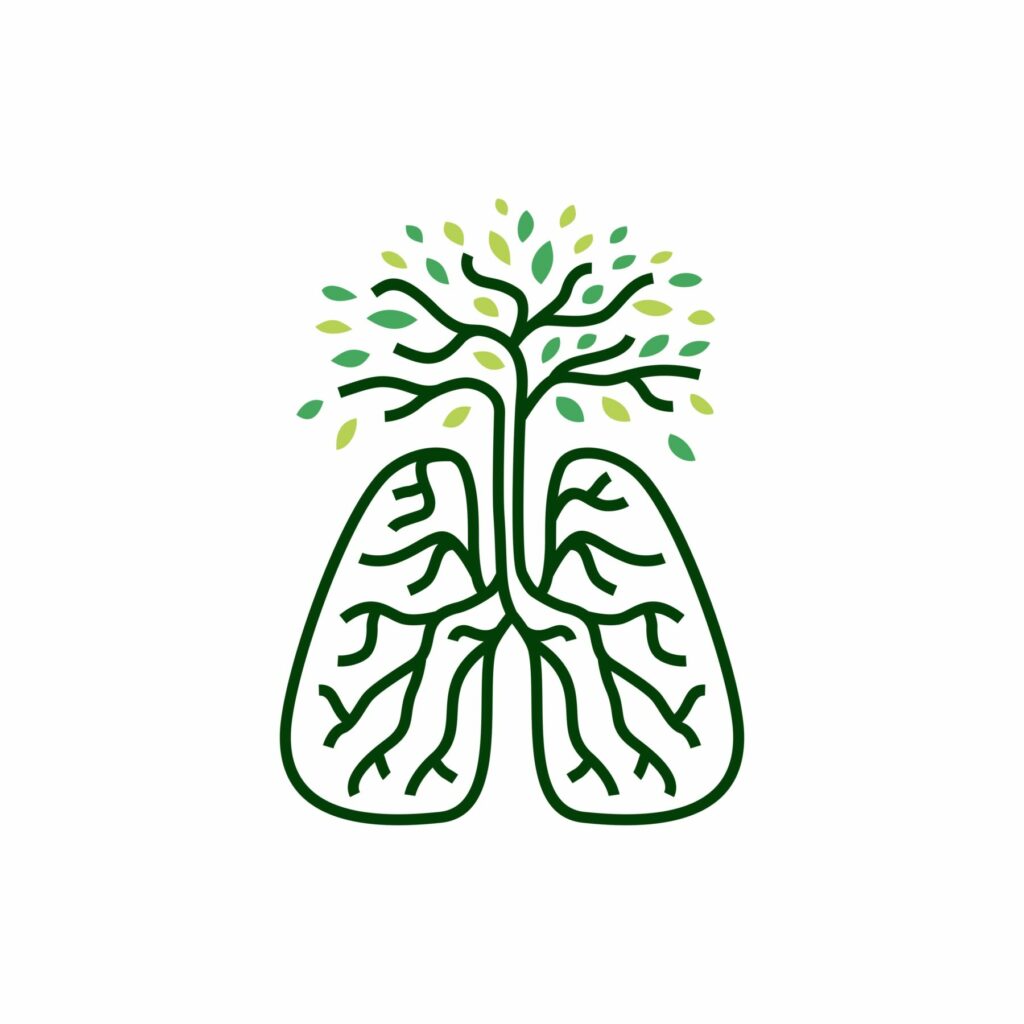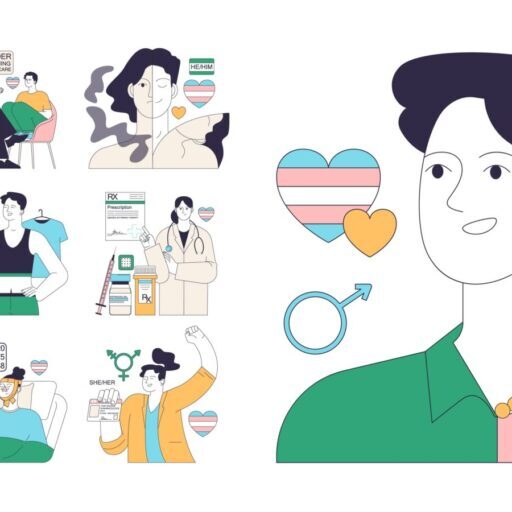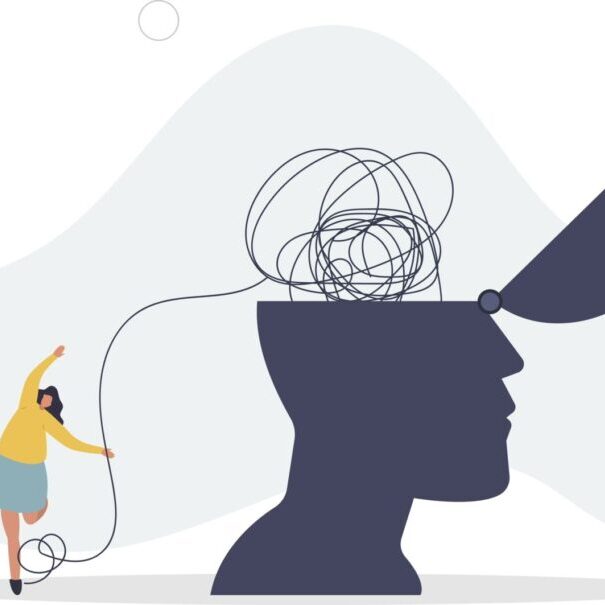Breathing Exercises to Reduce Anxiety

The hustle and bustle of the day-to-day leads many Chicagoans to feel “revved up” and anxious, but using breathing exercises to reduce anxiety can help.
The impact of breathing on our physical and mental health should not be underestimated. Breathing can both promote relaxation and reduce stress, playing a crucial role in our body’s response to anxiety triggers.
Specific breathing techniques can be especially effective in reducing symptoms of anxiety, as they interrupt the brain-body feedback loop that is active in anxiety.
When we experience anxiety, our body’s natural response is to activate the sympathetic nervous system, triggering the fight or flight response. This response can cause physical symptoms such as increased heart rate, rapid breathing, and muscle tension, which can further increase feelings of anxiety.
By practicing breathing techniques, we can activate the parasympathetic nervous system, which promotes relaxation and helps to counteract the fight or flight response. When we take slow, deep breaths, we send a message to our brain that we are safe and in control. These types of breathing help to increase oxygen flow to the body and calm the mind.
If you struggle with breathing during times of stress, practicing breathing exercises for anxiety can help stabilize your body’s response to these triggering situations. Take a look (and practice) at these breathing exercises!
Yogic Breath:
Yogic Breath, also known as Lion’s breath or simhasana, is a breathing practice that is often paired with yoga techniques. This technique is called “lion’s breath” because it involves sticking out your tongue and roaring like a lion. While it may seem unusual, studies have shown that this breathing technique can help to relax the muscles in your face and jaw, as well as ease stress and improve cardiovascular function. To practice lion’s breath:
- Inhale deeply and try to fill your lungs as much as possible.
- Open your mouth wide, stick out your tongue, and stretch it down toward your chin.
- Exhale forcefully while making a “ha” sound from deep within your abdomen.
- Repeat this technique up to seven times, and consider coupling it with the yoga “lion pose” for added benefits.
From increasing lung capacity to easing facial muscles, lion’s breath is a fun and effective way to manage stress and reduce anxiety.
Alternate Nostril Breathing:
As the name implies, alternate nostril breathing (ANB) involves alternating between inhaling and exhaling through each nostril separately. Recent studies have shown that practicing ANB may be an effective tool for managing anxiety, with results indicating that it may be three times more effective than other mindfulness-based breathing techniques. So, if you’ve not had success with other breathing techniques, it may be worth a try. Here’s how:
- Use your right hand to place the tips of your index and middle fingers between your eyebrows on your forehead. Use your ring and little finger to close off your left nostril, while using your thumb to close off your right nostril.
- Take a deep breath in through both nostrils. Use your thumb to close off your right nostril and exhale through your left nostril.
- Inhale through your left nostril and then use your ring finger to close it off. Release your thumb from your right nostril and exhale through it.
- Inhale through your right nostril, use your thumb to close it off, release your ring finger from your left nostril, and exhale through your left nostril. Repeat this cycle of breathing, alternating between nostrils, for several minutes to achieve a sense of calm and relaxation.
Diaphragmatic or “Belly” Breathing:
Engaging in diaphragmatic breathing, also known as “belly breathing,” can help to promote relaxation and reduce stress. This breathing technique focuses on engaging the diaphragm to promote full oxygen exchange and encourage deep, refreshing breaths. This type of breathing can also slow down the heartbeat and stabilize blood pressure, which can contribute to a sense of calm. To practice diaphragmatic breathing:
- Begin by sitting up straight and pulling your shoulders back to relax them.
- Place one hand on your chest and the other on your stomach.
- Breathe in through your nose for about two seconds, and then exhale while pursing your lips and gently pressing on your stomach.
- Repeat these steps several times until you feel more relaxed and centered.
Incorporating diaphragmatic breathing into your daily routine can help to promote a sense of calm and reduce anxiety and stress levels.
4-7-8 Breathing:
The exercise involves breathing in a rhythmic pattern with intervals of four, seven, and eight seconds. To practice this technique, focus on the following breathing pattern:
- Breathe in through your nose to the count of four
- Hold your breath to the count of seven
- Exhale through your mouth to the count of eight
After repeating this pattern three times, you should begin to feel more in control of your breathing and experience a sense of calm. It’s recommended that you practice this technique at least twice a day, but no more than four breath cycles in a row. If you find it difficult to hold your breath in intervals of 4-7-8, try a shorter pattern like 2-3.5-4, as long as you maintain the ratio of the pattern. Practicing this exercise regularly can help you feel more centered and calm, and can contribute to overall well-being.
Resonance Breathing:
Resonance breathing involves breathing in equally timed intervals, typically at a rate of around six breaths per minute, in order to synchronize your heart rate with your breathing. The goal of resonance breathing is to calm your breathing and put your mind into a relaxed state, which can help to reduce feelings of anxiety and stress. To practice resonance breathing:
- Lie down and close your eyes.
- Breathe in through your nose for a count of six seconds, being careful not to fill your lungs too full of air.
- Exhale for six seconds, allowing your breath to leave your body slowly and gently.
- Continue for up to 10 minutes, and then take a few additional minutes to be still and focus on how your body feels.
By deliberately slowing your rate of breathing, you can increase the amount of time between your heartbeats and help calm your body’s fight-or-flight response to anxiety.
When it comes to anxiety management, incorporating breathing techniques into your morning routine can be incredibly helpful. However, it’s important to start small and choose techniques that work best for you. There are many different types of mindful breathing exercises to explore, so take your time and find what feels most comfortable and effective for you.
While breathing techniques can be beneficial for many people, it’s important to remember that they are not the only relaxation methods available. Depending on your needs, cognitive behavioral therapy exercises or progressive muscle relaxation may be more effective in reducing anxiety. It’s all about finding the right tools that work for you and your unique situation.
It’s worth noting that breathing exercises may not be suitable for everyone, particularly those with panic symptoms or PTSD. In some cases, focusing on deep breathing can increase symptoms, so it’s important to proceed with caution or explore alternative relaxation techniques like guided visualization. Everyone’s nervous system responds differently to different methods, so there’s no need to force yourself to do breathing exercises if they don’t feel right for you.
At the end of the day, the most important thing is to find strategies that help you manage your anxiety and promote relaxation. Don’t feel pressured to conform to a certain technique or approach just because it works for others. Experiment with different methods and find what works best for you and your body.
This blog is made for informational and educational purposes only. It is not medical advice.
The information in this blog is not intended to (1) replace a one-on-one relationship with a qualified licensed health care provider, (2) create or establish a provider-patient relationship, or (3) create a duty for us to follow up with you.



